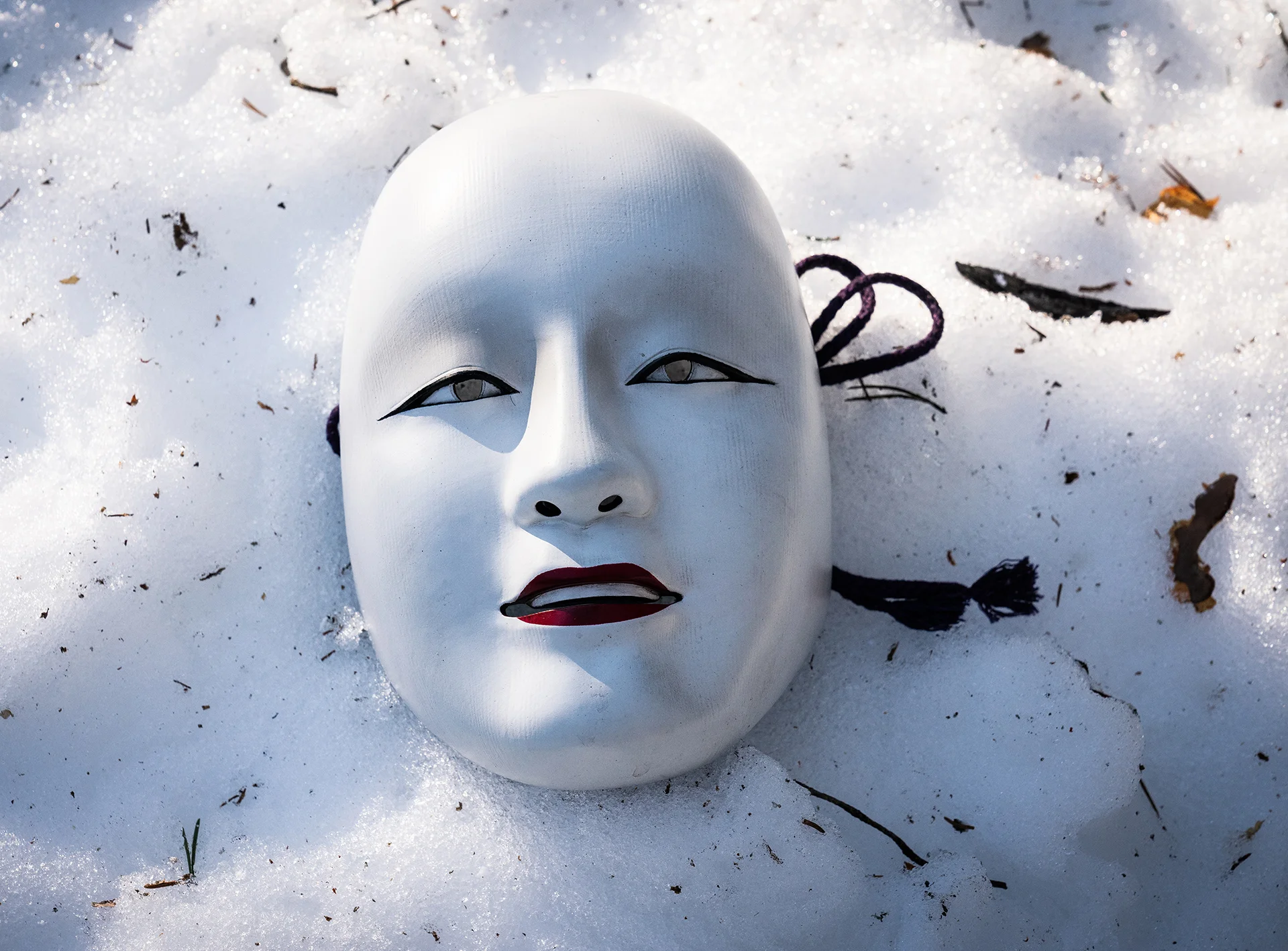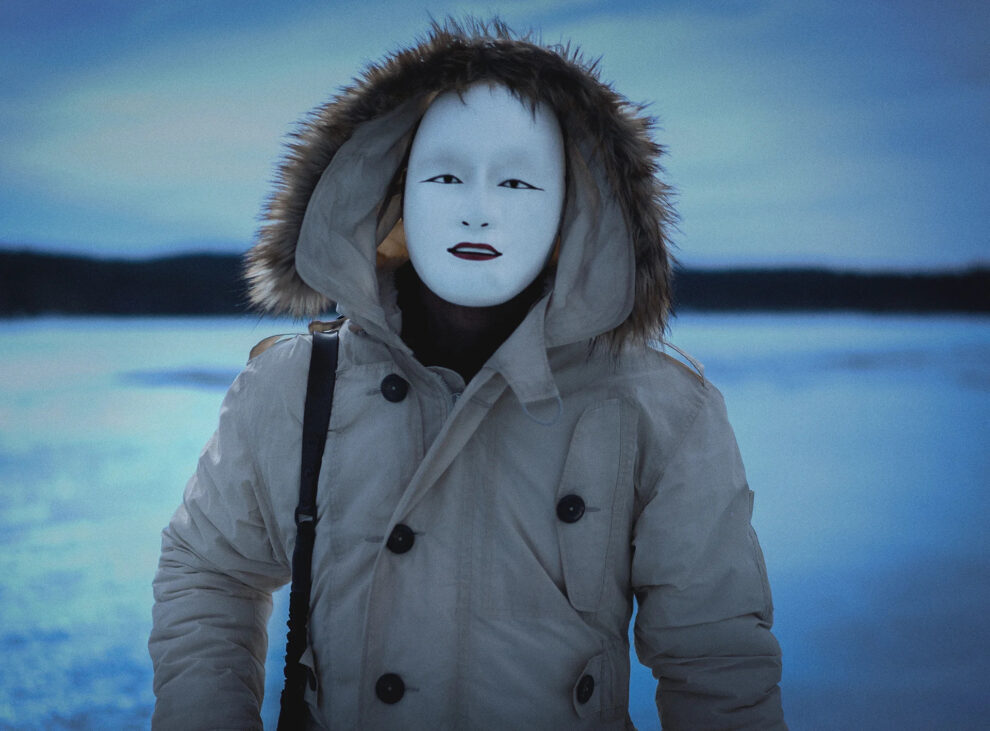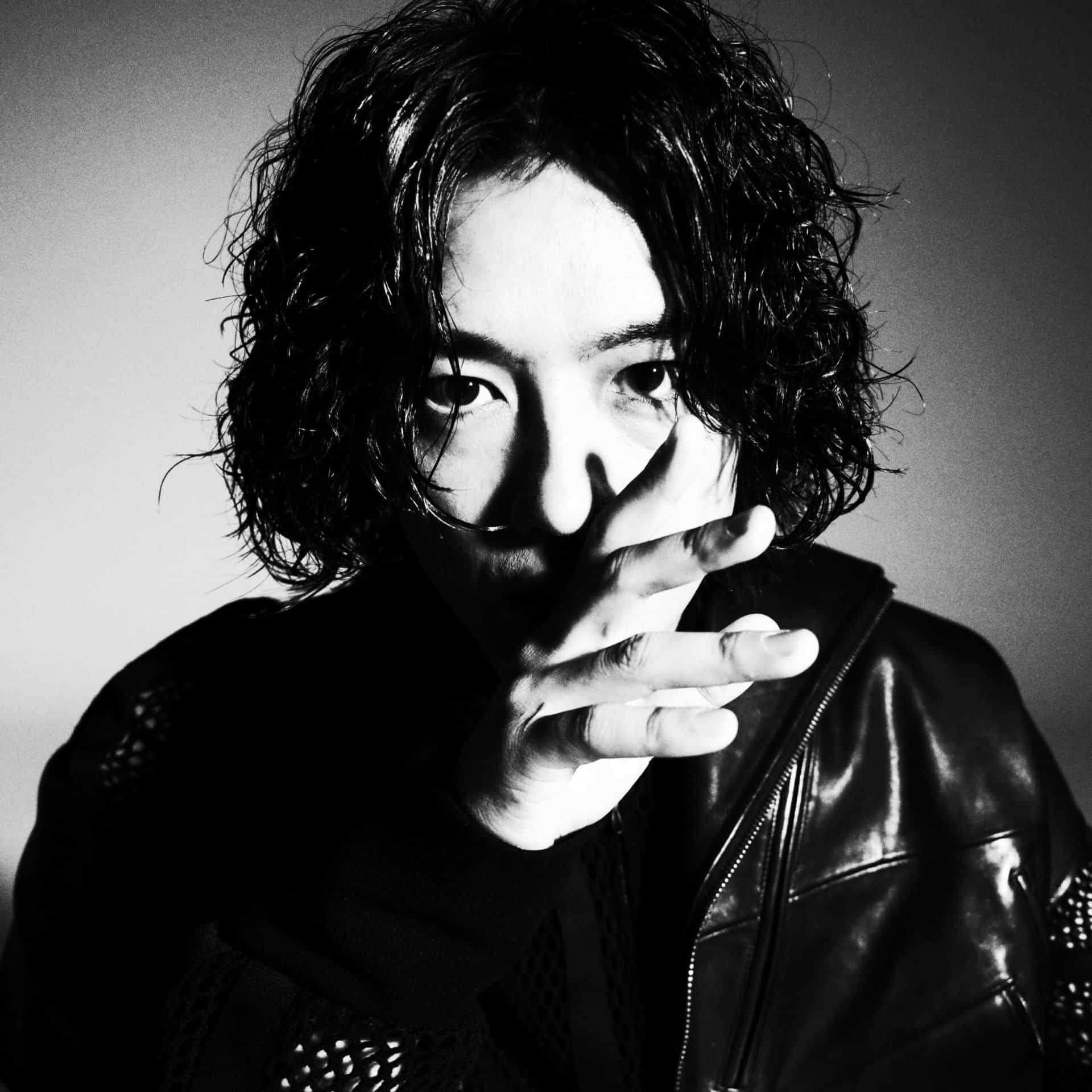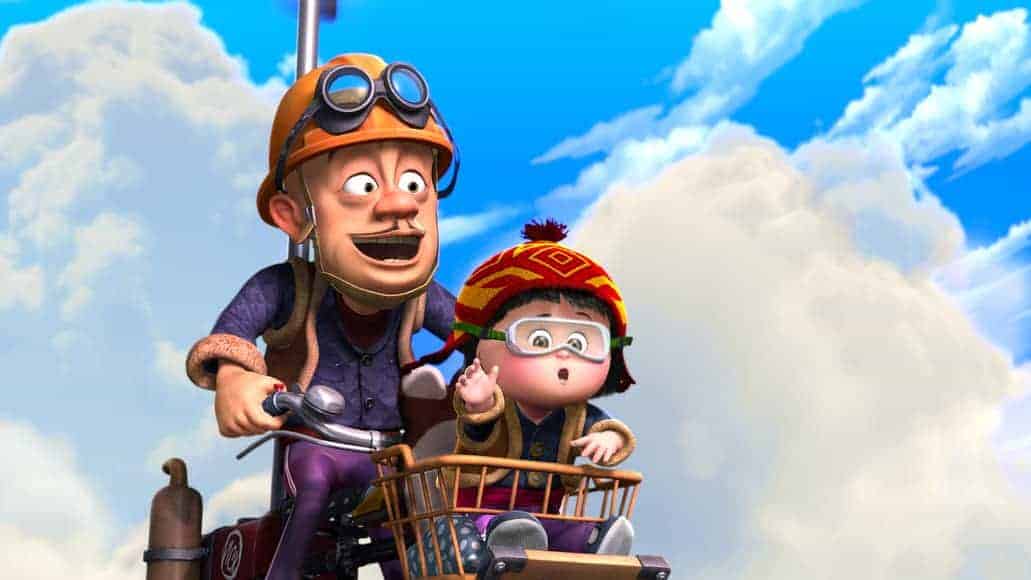by Upasana Dandona
In the very first scene of the film, “No Time to Die” (2021), the viewers are acquainted with a masked figure who commits a brutal murder right after being introduced. The best part about this particular character’s introduction is that the audience does not know who they really are — they could be a serial killer, a hired assassin, the nemesis of the family they targeted, the villain of the movie, or even the saviour of the world created by the filmmakers. Basically, both the identity and the intentions of the figure wearing a mask are left open to interpretation. This is primarily why it is justified for the filmmakers to have chosen a Noh mask for this dramatis personae: to create a sense of mystery about who the character is and what their role in the film is going to be.

To begin with, one of the most fascinating features of the masks worn by actors in Noh plays is that it can be regarded as devoid of emotion while still having both delighted and dejected facial expressions on it. In other words, based on the angle from which the mask is being viewed and direction of the light falling on it, the expression on it completely changes. As shown in the image below, the eyebrows, eyes, and mouth can come across as happy or sad simply because of how it is titled or held. However, what is interesting about this is that the facial features are never elated and forlorn at the same time. Thus, the ones viewing a Noh performance would not always know whether the visual effect of the performance is intended to be perceived as pleasant or unpleasant. This is brought out in the film when the audience is not made aware of the true emotions of the masked individual.

As “No Time To Die” progresses, it does, indeed, become clear to the viewers that the person with the Noh mask on is a man named Lyutsifer Safin (played by Rami Malek) who is the antagonist of the film. However, a question that remains unanswered throughout is why he is masked, in the first place. Some viewers might believe that it is because his face is disfigured or disabled — a trope that has been criticised by various film critics. Yet, many others would argue that if that is the actual case then, his character would have remained masked throughout the film instead of just a few chosen scenes. While the thoughts of the filmmakers regarding the same are not popularised much, the overall impact of the scenes depicting the masked individual make it seem as if the true intention behind masking Safin is to separate his true feelings from the horrendous acts he is committing within the narrative.
Another point worth pondering on is how the mask influences the discernable representation of scenes where the character is wearing it. In a way, the Noh mask makes Safin appear baleful in numerous ways which is not the usual impression that Noh plays leave on their audience – they are, after all, visually far more pleasing.















